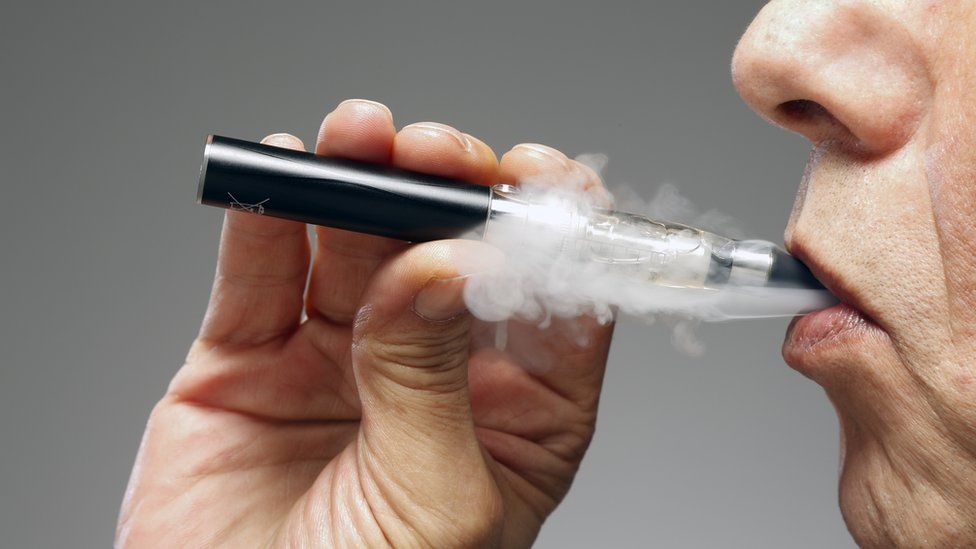New Zealand’s youth vaping crisis clouds smoke-free future

“It got more accessible for me, so I got addicted. Everyone around me was vaping at the time.”
Coco, whose name has been changed to protect her identity, was 12 when she vaped for the first time. She’s now 15 and trying to quit.
“She was angry,” she said, as she smiled at her mother sitting nearby. “My phone was taken away from me.”
Coco had never brought the vapes home, but as she grew more used to the habit, she also wanted to vape after school.
“What attracted me to it was more the flavours like ‘Peach ice’ or ‘Lychee-grape’. You can find vapes inspired by video games, they come in bright colours and flavours like bubble gum and candy floss,” she said.
It’s illegal to sell vapes to under 18s in New Zealand, but Coco said that never stopped her or her friends.
“The older kids sell to the younger kids and lots of shops don’t check IDs,” she said.
“You can just walk in there and say ‘I want strawberry, raspberry, watermelon’ and they’ll sell it to you. You can even go in your uniform and they just don’t say anything,” she added.
New Zealand is on target to becoming smoke-free by 2025. This means being cigarette and tobacco free and that’s where vaping comes in. For long-term adult smokers, it’s seen as a less harmful alternative but the flipside to that is the exponential rise and accessibility of vaping to teenagers and at times younger children.
According to data released last year, the number of teenagers in New Zealand who vaped regularly had tripled between 2019 and 2021.
The government has defended vaping, arguing that evidence is growing that vaping can help people quit smoking. But at the same time it has acknowledged the sharp rise in youth vaping, and has implemented new rules.
The new regulations include banning most disposable vapes, not allowing new vape shops within 300m (900ft) of any schools, and enforcing generic flavour descriptions. There are no rules however to regulate the vast variety of the flavours themselves.

Vaughan Couillault, principal of Papatoetoe High School in South Auckland and president of the Secondary Principals’ Association of New Zealand, has a number of confiscated vape pens in his office.
“Strawberry ice-cream” reads one of the labels on a disposable vape that looks like red lipstick. “Pineapple ice” was another that looks like a bright yellow lighter.
“‘Pineapple ice’ is not targeting a person who’s been smoking for 30 years,” Mr Couillault said.
He has witnessed first-hand how schools have become the epicentre of vaping – a lot of which he says is aimed at youngsters.
“It’s a lifestyle object. They’ll have a phone in one pocket and a vape on the other. It’s sleek. It looks modern. In terms of a product and marketing perspective, some genius work has been done,” he said.
“But it’s not helping young people. It might be helping people get off smoking, but there’s far too many young people who never would’ve picked up or thought about picking up a cigarette who now have two or three vapes,” he added.
This is now the habit of choice for millions of young people around the world.
“There are probably more teens that do vape than don’t at school, and they pack out the bathrooms,” Coco said. “And when the colourful flavours came out, that just got every kid on it.”
Marni Wilton said many vape shops had popped up recently around her Auckland suburb close to her sons’ local schools.
“Whichever gates the kids come out of there’s a vape shop,” she said, pointing to a store just 60 metres away from a primary school.

Like many mothers, Ms Wilton is worried about how prevalent vaping has become. She co-founded a voluntary group called Vape Free kids with other equally concerned parents.
Ms Wilton said the new government regulations fail to address the problem: “This absolutely doesn’t go far enough to help our children.”
“We have over 7,500 vape shops in New Zealand now. The new laws do nothing to affect the existing stores that are already built. So many are close to our schools, our playgrounds – they’re in those safe spaces,” she added.
Neighbouring Australia has taken a hard-line approach, moving to ban recreational vaping and making it prescription only.
Ben Youdan, who has worked in tobacco control and campaigning for nearly 20 years both in the UK and New Zealand, said banning vaping only drives it to the black market rather than get young kids off it.
“It’s a phenomenon that is happening whether you ban it or not,” he added.

Mr Youdan is now director of Ash NZ, a lobby group campaigning for a smoke free New Zealand. He said when discussing vaping one should not lose sight of the bigger picture.
“There’s no doubt that our smoking rates have benefited hugely from tens of thousands of people switching from smoking to vaping. We’ve seen smoking rates here drop by a third in the last two or three years. It really is unprecedented,” he says.
Mr Youdan acknowledged that a by-product of that was the “explosion of the vape market”.
“We’ve seen a lot of vape shops that are about ‘making money quick’ rather than to responsibly support adult smokers quit smoking. We allowed that to happen by being far too slow to regulate the vaping market,” he said.
He added that while a number of youths have become vape-dependent and need to be treated, there’s a large spectrum of teens who are also experimenting. “Not all kids are addicted,” he said.
Around the world, it’s become a tough balance to strike: parents and families who want to see fewer youngsters vaping, and governments who want to see fewer adults smoking.
One thing is for certain: it may have started as a solution to cigarettes, but vaping has now created its own problem.
Related Topics
-
-
29 September 2022

-


















